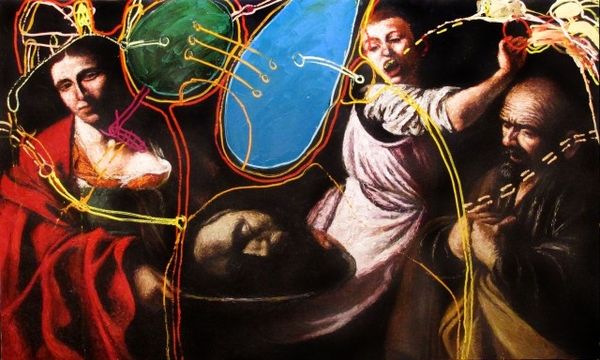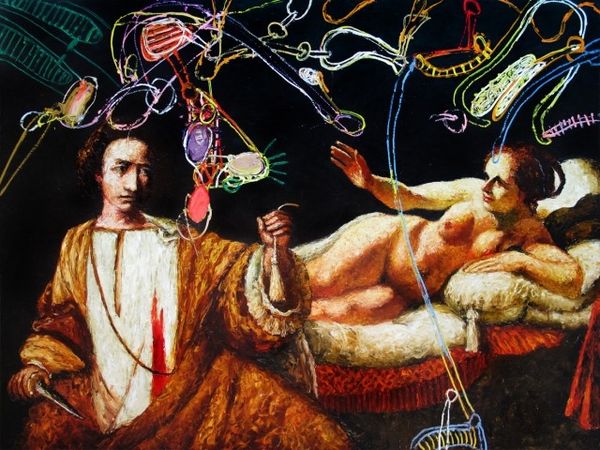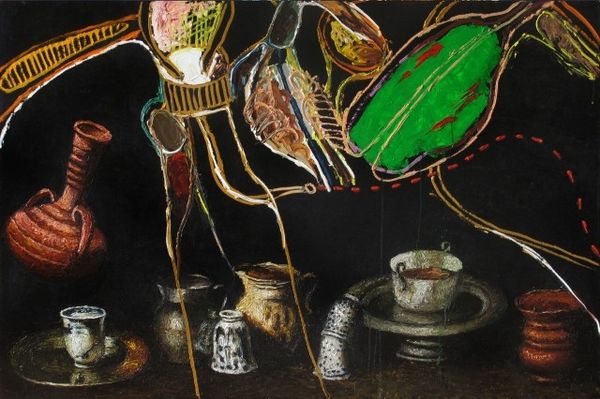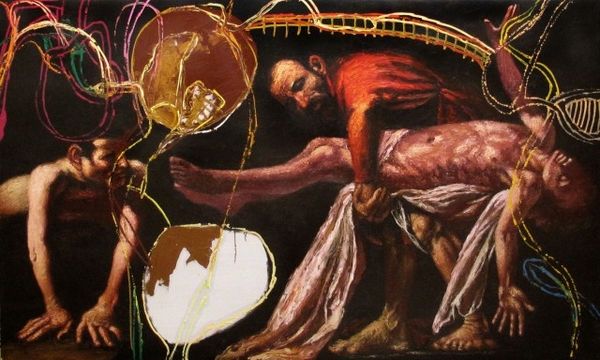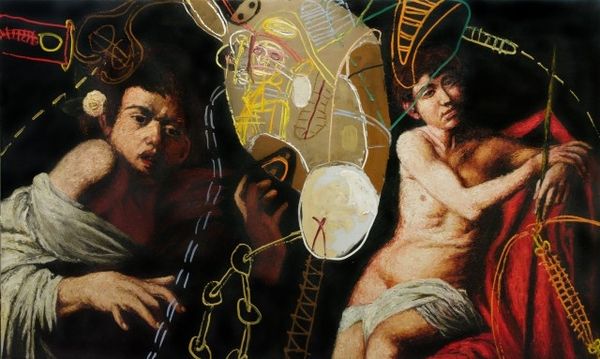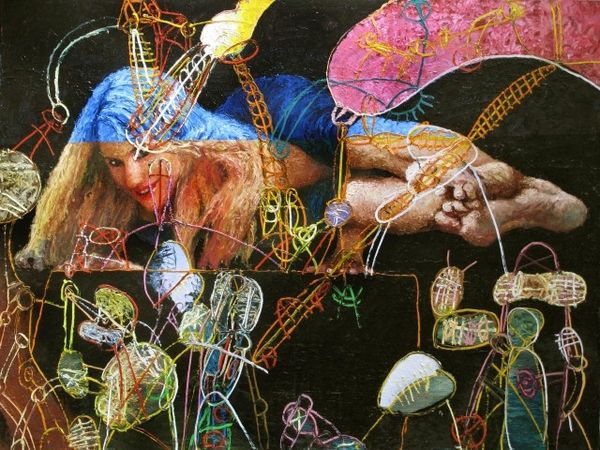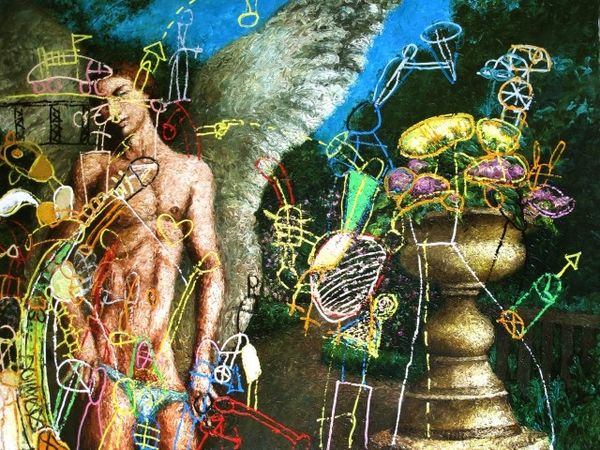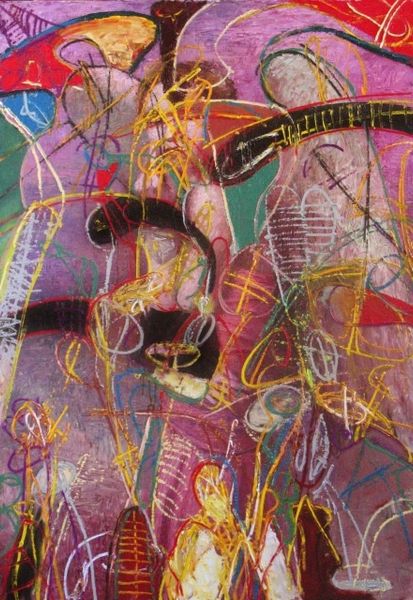
painting, acrylic-paint
#
painting
#
acrylic-paint
#
neo expressionist
#
naive art
Copyright: Alexander Roitburd,Fair Use
Curator: Look at the raw energy crackling off this canvas! Alexander Roitburd's "The Well-Tempered Clavier," painted in 2011 with acrylics, just vibrates with a frenetic joy. It feels like a punk rock orchestra tuning up backstage, all wild abandon. What grabs you first? Editor: It’s this clash, isn’t it? The recognizable forms, almost Renaissance in their posing – the lute player, the violinist – submerged within a chaotic, scribbled overlay. The black background intensifies that dichotomy. I find myself strangely unsettled by the whole thing. Curator: Exactly! It's like Roitburd's riffing on the old masters, giving them a jolt of 21st-century anxiety and wit. Those swirling lines almost mimic musical notations but they are, you're right, unsettling... defacing even, while also amplifying the drama. I feel like there's a social commentary bubbling beneath, something about the perceived timelessness of classical ideals meeting the messy realities of our era. Editor: I can see that reading. Perhaps he is considering the museum’s own role? Positioning itself between high culture, that perceived “timelessness,” and the vernacular, almost childish scribbles, disrupting such notions. I also see the figures looking in different directions: that increases a feeling of disjunction for me, a type of chaotic imbalance where nothing will ever feel right. Curator: That's brilliant. Their disconnection! A Renaissance tableau, but fractured, yearning... And, to your museum point, doesn't the title suggest the kind of "ordering" we impose through collections, when really art – life – is inherently a little more off-kilter, as we find it? He's saying to me “Smash the glass; this isn’t your granny’s baroque art!”. It’s exhilarating. Editor: I agree the subversion is quite thrilling. Even in art history, the "canon" is always being challenged. Perhaps that’s what makes "The Well-Tempered Clavier" such a resonant statement, echoing through time and galleries and raising more questions than answers. It is the role of art institutions, after all, to embrace the disruptions too, no? Curator: Precisely, a perfect harmony – or disharmony – of the ages! And that, ultimately, is its enduring appeal: a vibrant argument captured in acrylics, insisting that art, like life, never stays politely within the lines.
Comments
No comments
Be the first to comment and join the conversation on the ultimate creative platform.
